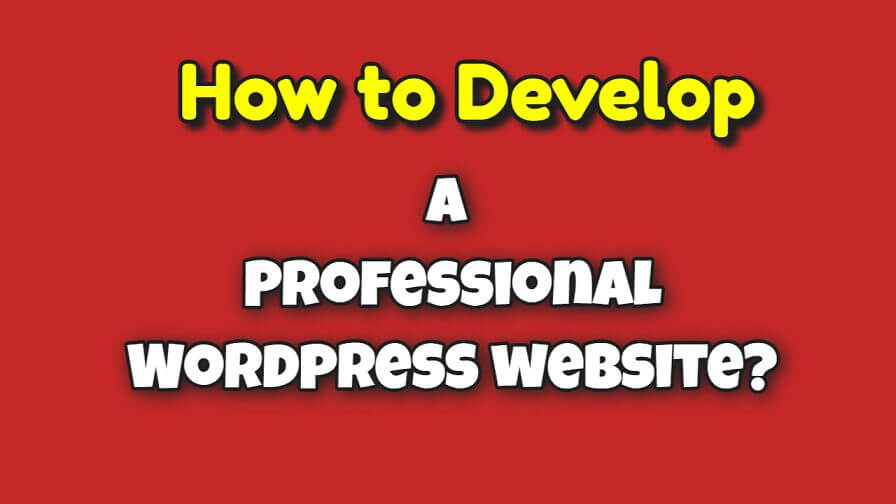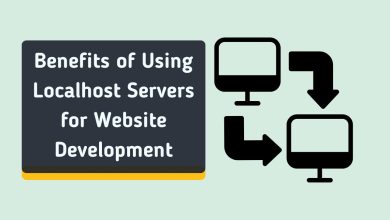How to develop a professional WordPress website
Creating a professional-looking WordPress website is crucial for businesses, freelancers, and bloggers who seek to have a solid online presence. Since WordPress supports more than 40% of sites globally, it is still the most adaptable, user-friendly, and expandable platform with which to create a website that appears professional and runs smoothly. More than simply installing a theme, creating a professional-looking and high-functioning WordPress site is necessary, though strategic planning, design optimization, and SEO best practices are involved.
In this post, we have shortlisted the most essential steps that you must follow to develop a professional WordPress website.

Right Web Hosting
There are many cheap and professional web hosting services available on a simple Google search. But you need to know that different plans have different hosting resources available such as file hosting size, RAM and CPU. While lower-end plans giving 1GB RAM or 2 GB web space might work for simple blogs, if you are planning to have an e-commerce website that uses WooCommerce or an e-commerce plugin, I would advise using a minimum of 2-4 GB RAM.
Gradually, you might need to upgrade to an even higher resource plan based on the speed and performance that you are getting, but if you use 1 GB or less RAM, you will often experience error 500 or similar PHP errors because your website will often run out of resources to execute a back-end query.
Also Read: Select How to Keep Your WordPress Website Secure
Using Good-Looking Themes
When you install WordPress, a default theme is automatically installed on your site. At first look, it appears to be quite austere.
By modifying this basic theme, you may build a stunning website. However, some restrictions may prohibit you from fully customising your site. It may be too minimalist or typographically focused for your business. Its single-column style, which works well for content-heavy websites, may not work well for your e-commerce site.
For further control over your site’s design, you may select from hundreds of free and premium WordPress themes accessible via the WordPress theme directory or third-party marketplaces. With more colour options, sidebars, background options, Google Fonts, and layouts to select from, you can customise your site to appeal to your target audience and make it appear unique.
Create Essential Pages
Create important pages such as the home page, about page, contact page, and any additional pages relevant to your content or business. Pay attention to readability, clarity, and consistency in terms of design and content presentation.
Use the Best-Rated Plugins
When looking for a plugin, you’re likely to come across both free and paid alternatives. Generally, free plugins are an excellent place to start. This is because they are free and, depending on your needs, the free version may suffice.
The best source for such plugins is the WordPress plugin repository. Numerous plugins with the same or comparable capabilities are available for FREE, making this an ideal starting point.
On the other hand, premium plugins are not prohibitively costly, and they also include superior support and more functionality, which are important factors to consider when selecting the finest plugins for your site. In either scenario, you should only get plugins from well-established and reputable sites. Utilize suggestions from websites to help you identify high-quality plugins.
Additionally, you should avoid unauthorised free downloads or pirated versions of commercial plugins. Not only is this unjust to the developers who spent time and effort developing the plugin, but the likelihood of malicious code being introduced into these plugins and causing harm to your website is extremely significant.
You May Also Like: 14 Ways to Make Money from Blogging on WordPress
Optimize for SEO
Optimizing your WordPress website for SEO (Search Engine Optimization) is crucial for improving search rankings, driving organic traffic, and increasing visibility. Without proper SEO, your website may struggle to appear on the first page of search results, making it difficult for potential visitors to find you. By executing on-page and technical SEO techniques, including keyword optimization, site speed optimization, and structured data usage, you can improve your website’s ranking on search engines like Google and Bing.
An optimized WordPress website draws more visitors, increases engagement, and ultimately contributes to business objectives, be it lead generation, sales increase, or audience growth. In addition to rankings, SEO also benefits user experience (UX) by optimizing site speed, mobile-friendliness, and navigation.
Search engines favor fast, user-friendly, and content-dense sites, so an SEO-optimized WordPress site stands a better chance of keeping visitors engaged and lowering bounce rates. Moreover, amenities such as SEO-friendly URLs, meta tags, and image optimization make it simple for search engines to access and index your content.
Also Read: WordPress Rich Snippets Guide: Everything You Need to Know
Implement Security Measures
Install a security plugin and take the necessary precautions to protect your website from potential security threats. Regularly update WordPress, themes, and plugins to take advantage of security patches and bug fixes.
In addition to installing a security plugin and updating WordPress, themes, and plugins, there are several other precautions you can take to ensure your website is protected from potential security threats. One important step is to use strong and unique passwords for all user accounts, including your own. It is also recommended to limit login attempts and enable two-factor authentication to add an extra layer of security. Furthermore, you should regularly back up your website data to avoid losing important information in case of a security breach or technical failure. By following these steps, you can greatly reduce the risk of security threats and protect your website and its visitors.
Closing words
WordPress, the feature-rich content management system, means various things to different individuals. The technology powers nearly 40% of all web pages on the web in 2025. The CMS is modernised over time by the developers through experimentation and the incorporation of new technology. This transforms the antiquated platform into a quick and effective one that works right out of the box for enterprises.
However, it takes developers to construct the WordPress website, which requires them to have in-depth knowledge of development, using and configuring themes and plugins that will deliver the expected outcome.

